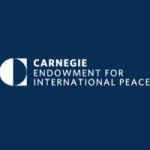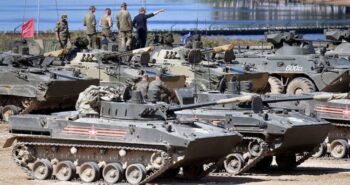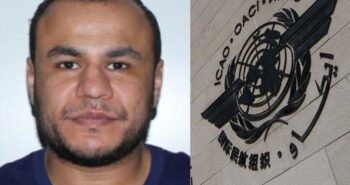Frederic Wehrey
 In Libya, religious endowments and their associated wealth have become a magnet for intense and often violent competition among Libya’s many political and religious currents.
In Libya, religious endowments and their associated wealth have become a magnet for intense and often violent competition among Libya’s many political and religious currents.
PART (III)
THE PRIZE: THE AWQAF AFTER QADHAFI (2011–2014)
In many respects, the fall of the Qadhafi regime represented a definitive historical break for Libya’s Islamic institutions and Islamic actors, creating newfound opportunities and dilemmas alike.
On the one hand, they enjoyed newfound latitude to speak, write, organize, and proselytize.
And yet, this sudden opening also presented them with newfound dilemmas and choices as well—about their participation in the country’s new political order and their relations with other political and Islamic currents, who were also maneuvering for ascendancy and influence in governance institutions, the security sector, and especially at the grassroots level and on the street.
The struggle for the awqaf institution, then, must be situated within this ideological and doctrinal ferment in Libya’s Islamic field in the years following the dictator’s demise.
A key prize in this contest was the national awqaf office because of its mandated role in overseeing the appointment and monitoring of imams and its administrative influence over Quranic schools and the dissemination of Islamic materials.
But the awqaf authority also exists at the center of a political and economic contest. Its responsibility for regulating and administrating religious endowments of land and real estate assets to support mosques, schools, and charitable causes made it a prize of factional contestation.
According to one former head of the national awqaf office, it consists of the following five sections: Administration of the Awqaf, Department of Waqf Properties, Department of Zakat Funds, Department of Mosques and Quranic Schools, and a section for management of Sufi zawaya.
Conversely, the office has sometimes taken on theology-based rehabilitation for imprisoned jihadists and offered itself as a platform for national reconciliation.
Awqaf officials have also engaged in diplomacy with foreign actors—most notably Saudi Arabia but also Egypt, Morocco, Qatar, and Turkey. Unsurprisingly, these overtures have been met with criticism by factional and ideological opponents who charge that the officials are overstepping their mandate.
Since 2011, ideological and political factions have competed to control the awqaf authority’s financial resources and its oversight over mosque appointments.
Further, Libya’s broader Islamic discourse has been frequently propagated by religious figures who have enjoyed tacit backing from militias, who themselves often had ties to powerful political elites and were receiving state funds.
In tandem, a variety of social and political actors have made claims and counterclaims about its holdings and assets, dating back decades and reflecting the policies of manipulation and interference by Qadhafi and Italian officials.
Memories of these policies, colored through rivalries that arose during and after the 2011 revolution, continue to inform a wide range of property-related grievances today, including those related to the awqaf.
Overlaying these tensions are disputes over budgets and administrative authority between the awqaf institution in Tripoli and its offices in Libyan cities, towns, and communities outside the capital. Here again, this gap between the center, or the capital, and the periphery, or the provinces, is a deep-seated problem stemming from the Qadhafi era that affects other aspects of Libyan governance.
In the first year after the revolution, multiple sources from Libya’s clerical community and Islamist currents described a low-level contest among Islamic actors for influence in mosques, schools, and social life—chiefly, between Madkhalis, the Muslim Brotherhood, Sufis, and the more activist and militant figures loosely affiliated with Libya’s Grand Mufti Sadiq al-Ghariani.
The latter current, associated with the mufti, is especially important in any analysis of the awqaf authority or ministry because of al-Ghariani’s oversight of Libya’s Dar al-Ifta, or Office of Fatwa (a legal opinion on a point of Islamic law).
Since 2011, the Dar al-Ifta has existed as a social and moral authority parallel to the Ministry of Awqaf and Islamic Affairs (earlier called the General Authority for Awqaf and Islamic Affairs), issuing fatwas on matters of arbitration and conflict resolution.
And at various times, depending on the factional control of the office of awqaf, the Dar al-Ifta and al-Ghariani himself both supported and clashed with awqaf authorities.
In the immediate aftermath of Qadhafi’s fall, the most significant change to the awqaf office was its April 2012 elevation by the transitional government to the status of a ministry rather than a general authority.
To head this new body as minister, the government of interim prime minister Abdurrahim el-Keib in November 2011 appointed a Libyan cleric named Hamza Abu Faris, a mosque imam and scholar whose outspoken and dissident views incurred the wrath of the Qadhafi regime in 2010.
His appointment attracted immediate attention from the government of Saudi Arabia, which appeared especially concerned about his Islamist leanings and influence: an alleged Saudi intelligence memo, leaked to Wikileaks, flagged his supervision of the awqaf as being an important channel for the resurgence of political Islam in Libyan social and political life.
While this assessment was undoubtedly an exaggeration and a misreading of the Libyan political landscape, it does highlight the importance a major Arab and Islamic foreign power ascribed to the institution of the awqaf in Libya. This foreign interest would only increase as factional contestation for the awqaf increased in the years ahead.
The real rivalry at this time was for grassroots influence in social spaces and over local mosque appointments, the establishment of private schools, some municipal awqaf offices, and the distribution of Islamic materials.
Libyan clerics and Islamist interlocutors describe the struggle for the national awqaf authority in 2012 as fairly muted.
The real rivalry at this time was for grassroots influence in social spaces and over local mosque appointments, the establishment of private schools, some municipal awqaf offices, and the distribution of Islamic materials.
In this shifting landscape, the Madkhalis dominated the scene with increasingly assertive tactics.
This represented a shift from their passivity during the 2011 revolution, when many either sat on the sidelines or actively sided with the regime—a reflection partially of their previous alignment with the Qadhafi government but also their ideological aversion to taking up arms against the wali al-amr (the ruler or leader of a community, though certain Salafist doctrines use this term to mean a sitting head of state or bureaucratic or political authority to whom obedience is required).
But by the beginning of 2012, they had started using lobbying, petitions, payments, and other means to influence appointments in the mosques and Quranic schools of western Libya.
Increasingly, a development that paralleled these tactics was the formation of Salafist Madkhali-leaning armed groups. Among the most powerful of these was the Tripoli militia that would become the aforementioned Special Deterrence Force.
In the early years after Qadhafi’s fall, a major expression of Madkhali Salafist violence occurred against physical sites connected to Libya’s Sufi heritage—most notably graves, shrines, and libraries.
Here again, acquiescence and, in some cases, complicity from Libyan security officials played a role. But so too did a bureaucratic development in the newly created Ministry of Awqaf and Islamic Affairs.
In early 2012, administration of the Sufi zawaya was reportedly taken out of the ministry’s portfolio of responsibilities. According to several interlocutors, this left the zawaya politically exposed and with reduced funding streams.
“When the zawaya were under the ministry of awqaf, they were protected,” noted one Libyan scholar of Islamism. He went on to assert that the waves of Salafist attacks on sites of Sufi heritage in early 2012—especially the graves of Sufi scholars, which are overseen and administered by zawaya—were in part enabled by this move from Libya’s transitional government.
In tandem, the port city of Misrata, a commercial and political powerhouse to the east of Tripoli, became the site of increasing competition between the Madkhalis and their opponents from other Islamic and Islamist currents—such as the Muslim Brotherhood, former members of the now-defunct Libyan Islamic Fighting Group, some supporters of al-Ghariani (a minority), and some Sufis—over social space, economic and political power, and religious authority.
The awqaf branch was an especially important source of contention given its oversight of financial assets and property in Misrata, which represented the second-largest real estate holding in monetary value in Libya after Tripoli.
But with that branch reportedly in the hands of a Muslim Brotherhood–aligned figure after the 2011 revolution, Madkhali Salafists shifted toward a grassroots strategy of trying to control the city’s mosques by aggressively influencing the appointments of imams.
A former awqaf official in Misrata described these influence tactics in 2012 as the following:
If the [Madkhali] Salafis didn’t agree with an imam, they would go as a group to the mosque. After hearing the sermon, they would submit a petition to the awqaf office [saying] that the imam made mistakes in his understanding of the Quran or hadith—really, any excuse [they could find].
The awqaf office would then send a committee by surprise to attend the sermon and would ask for the names of the petitioners. . . . Eighty percent of the names were fake or were not regular mosque goers. Neighbors would say to the awqaf committee, ‘We don’t know these people [the Madkhalis] and we’ve never seen them before at this mosque.”
By the second year of Libya’s transition, however, these local contests had escalated to national-level political conflict over the awqaf office in the capital. Starting in 2013, then prime minister Ali Zeidan, a former member of the National Front for the Salvation of Libya, a longtime opposition movement that included an Islamist component, took office.
Zeidan’s appointment introduced the perception among opposing factions that the front dominated Libya’s key political and administrative institutions, including the onetime elected legislature, the General National Congress, and the awqaf ministry.
On February 10, 2013, Zeidan appointed Abd al-Salaam Saad, a Sufi scholar and former head of the Senegal-based branch of the Libyan Islamic Call Society under Qadhafi, as minister of awqaf and Islamic affairs.
Saad’s appointment had been a concession to former prime minister Mahmoud Jibril, the leader of the National Forces Alliance, a sprawling political coalition that included Islamists but has often been erroneously described as secular.
But Saad immediately faced opposition from Islamists centered around al-Ghariani—reportedly due to Saad’s proximity to the former regime and especially his personal ties to former foreign minister and Qadhafi confidante Moussa Koussa.
As a result, the post was left unfilled until July 2013 when Zeidan appointed Ali Hammuda, a former head of Misrata’s awqaf office and a longtime member of the National Front for the Salvation of Libya, including its military wing.
Zeidan intended for Hammuda to be a compromise candidate, acceptable to the Muslim Brotherhood, the Islamists loosely gathered around the mufti, and Jibril’s diverse National Forces Alliance. And by many accounts, Hammuda was able to straddle a relatively nonpartisan position.
Yet his tenure was buffeted by pressure from an increasingly assertive Madkhali Salafist current, which sought to undercut his authority by seeking to replace mosque imams and khatibs throughout Tripoli and beyond through lobbying, bribe payments, and sometimes force.
As the head of the awqaf ministry, Hammuda diagnosed the root of the institution’s problems as a product of the broader governing weakness of the Zeidan government in the face of factionalism and the power wielded by armed groups, as illustrated starkly by the brazen kidnapping of Zeidan himself in October 2013.
Outside the capital, the government of Tripoli’s writ was tenuous to nonexistent, especially in the south and in the east, degrading service provision, security, and the authority of the Tripoli-based awqaf office.
While deriving religious inspiration, guidance, and education from Saudi-based clerics, Libya’s Salafists often acted autonomously from Saudi Arabia on many issues, especially those related to local alliances, politics, and military action.
Exasperated by the feebleness of the Libyan government and worried about the Madkhalis’ increasing power, Hammuda turned to Saudi Arabia, the foreign state from which he believed the Madkhalis derived spiritual inspiration, political guidance, and funding.
During a trip to Riyadh in 2013, he asked the Saudi foreign minister about the government’s alleged support to Libya’s Madkhalis, but the Saudi official’s response was, “we don’t have any knowledge of this.”
While official Saudi denials should not be taken entirely at face value, they do illuminate an important aspect of Libya’s Salafist-Madkhali current.
While deriving religious inspiration, guidance, and education from Saudi-based clerics, Libya’s Salafists often acted autonomously from Saudi Arabia on many issues, especially those related to local alliances, politics, and military action.
And while they respect and follow many Saudi Arabia–based clerics, not just al-Madkhali himself, they do not obey their guidance in lockstep.
In some cases, they even modified or reinterpreted injunctions and statements from Saudi-based clerics, including al-Madkhali, to suit their agendas inside Libya.
Put differently, they were not acting on figurative remote control from Riyadh or Medina, nor as a Trojan horse for state-directed Saudi ideology, as some commentators inside and outside Libya have alleged.
This relationship with Saudi Arabia would become ever more contentious during the series of stark political choices and fragmentation that was thrust upon the Madkhalis and the awqaf during Libya’s civil war, which erupted in the summer of 2014.
***
Frederic Wehrey is a senior fellow in the Middle East Program at the Carnegie Endowment for International Peace. His research deals with armed conflict, security sector governance, and Islamist politics, with a focus on Libya, North Africa, and the Gulf.
___________
Carnegie Endowment for International Peace





